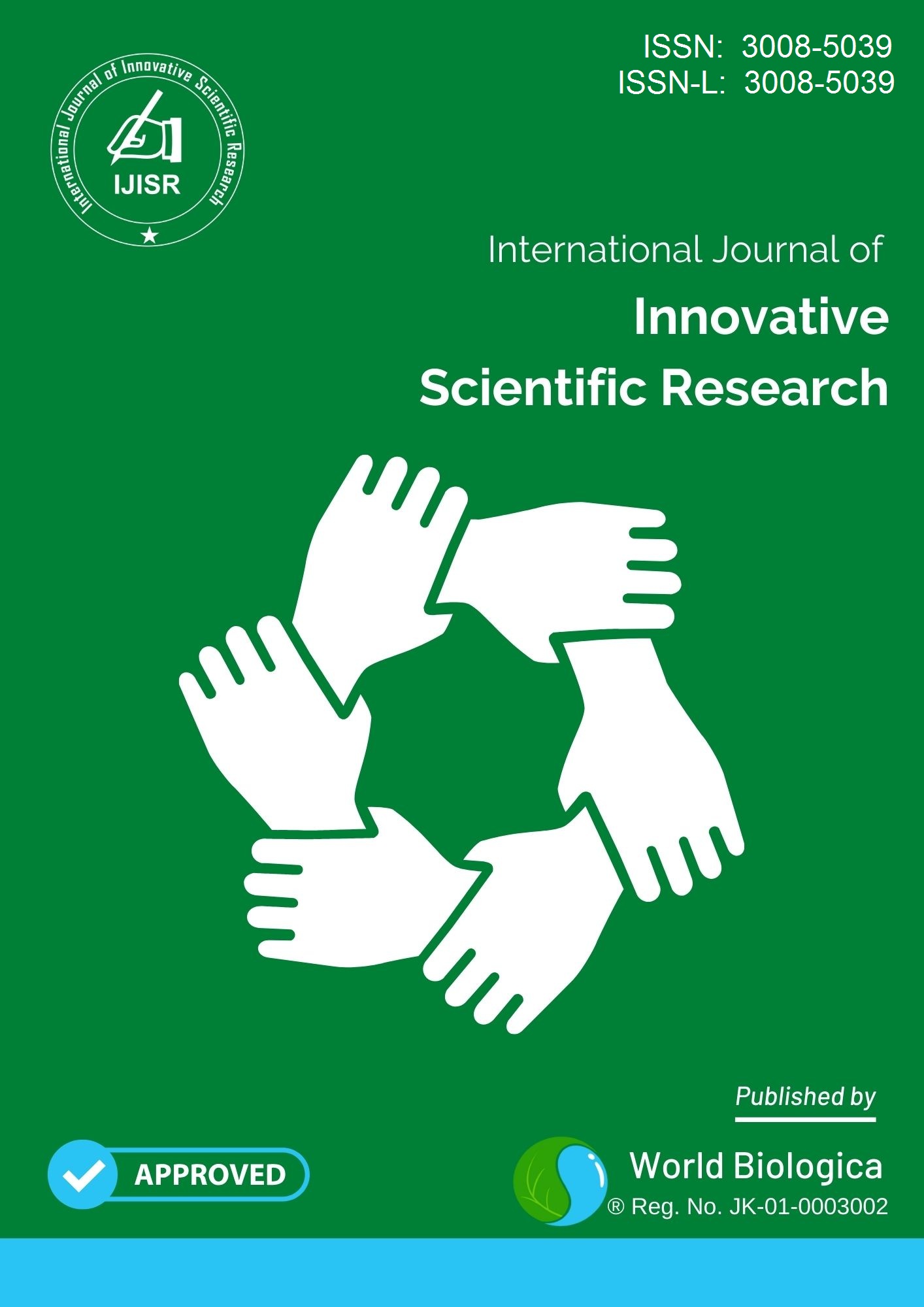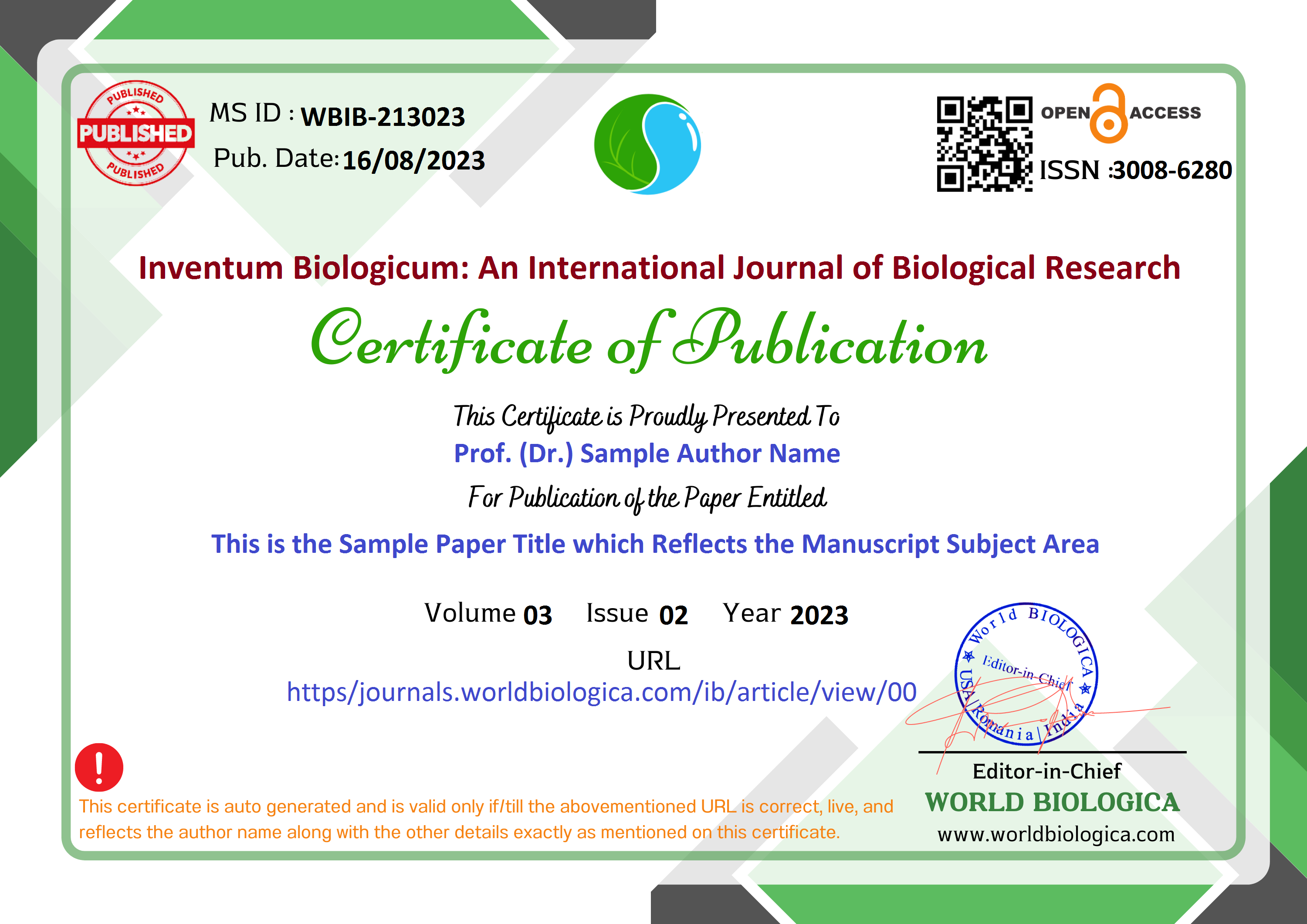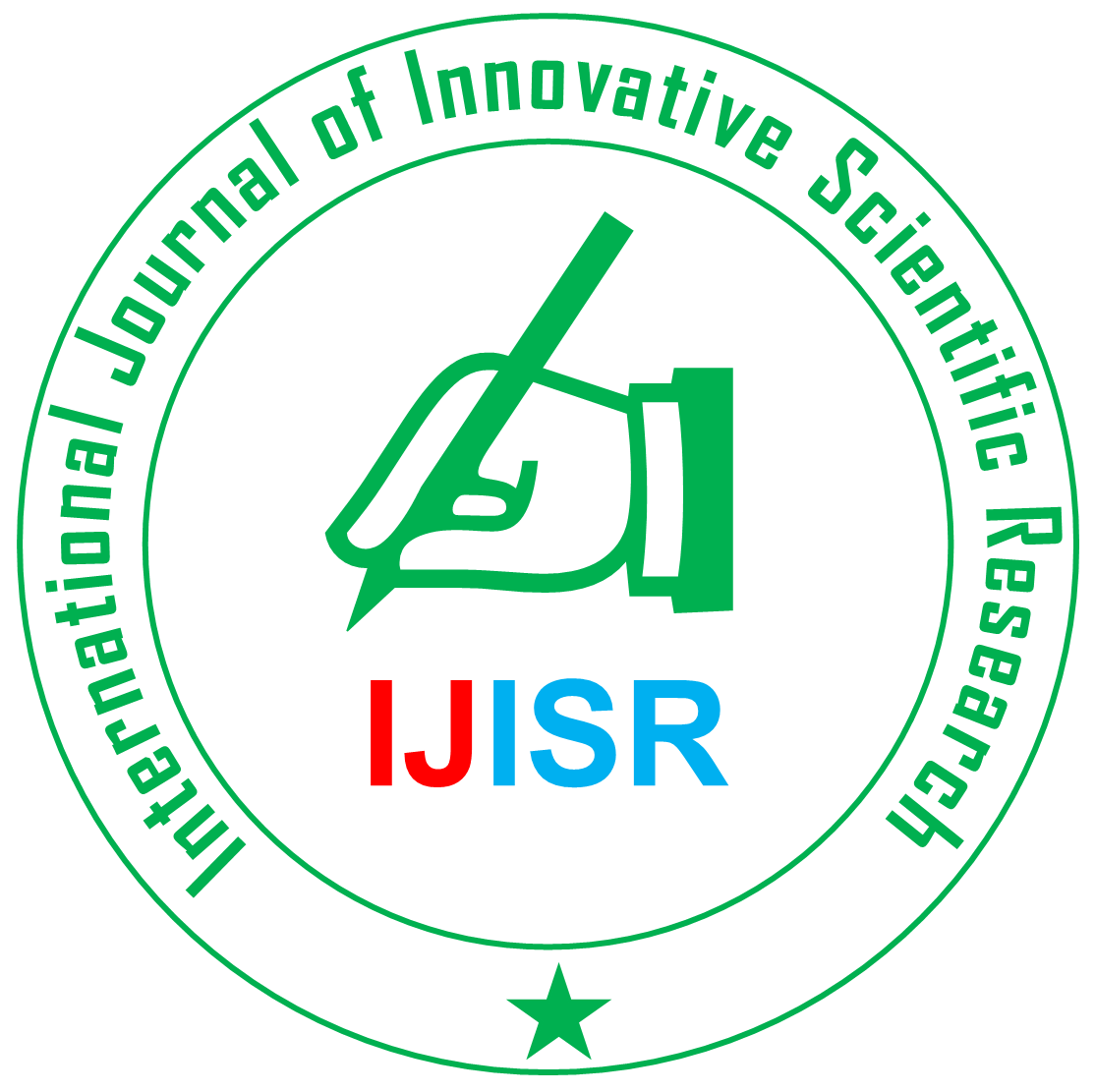The Constitutional Eschatology of Decentralization in Kenya: Exploring Federalism's Role in Shaping the Future of Devolution and Regional Autonomy
Keywords:
Constitutional Eschatology, Decentralization, Devolution, Federalism, Regional Autonomy, CountiesAbstract
This research examines Kenya's governance evolution from centralization to decentralization, focusing on the implementation of devolution following the 2010 Constitution and exploring federalism as a potential future trajectory. The study analyzes the successes, challenges, and limitations of the current devolved system in achieving equitable development and improved governance. It traces Kenya's governance structures from pre-colonial times through the present, employing a multidisciplinary approach to assess the impact of recent reforms on historical injustices, resource distribution, and public participation. The research also delves into the ongoing debate surrounding federalism in Kenya, examining how federal structures could potentially manage diversity, resolve conflicts, and promote national unity. Through synthesis of diverse theoretical frameworks and empirical evidence, this study contributes to the discourse on decentralization in Africa and offers insights for policymakers considering constitutional reforms to address Kenya's complex socio-political landscape and development needs.
Downloads
References
Ajulu, R. (1998). Kenya's democracy experiment: the 1997 elections.
Alber, E., & Palermo, F. (2023). Federalism and constitutionalism: a relation based on interdependency. In Teaching Federalism (pp. 33-44). Edward Elgar Publishing.
Anderson, D. M. (2005). ‘Yours in Struggle for Majimbo’. Nationalism and the Party Politics of Decolonization in Kenya, 1955-64. Journal of Contemporary History, 40(3), 547-564.
Anderson, L. (2012). Federal solutions to ethnic problems: Accommodating diversity. Routledge.
Arban, E. (2024) Federalism and the Unit Question. Perspectives on Federalism, 16(1), 139-163
Arban, E., Martinico, G., & Palermo, F. (2021). Federalism and Constitutional Law: The Italian Contribution to Comparative Regionalism. Routledge, Taylor & Francis Group.
Aroney, N., & Kincaid, J. (2017). Courts in federal countries: Federalists or unitarists?. University of Toronto Press.
Bachelard, J. Y. (2010). The Anglo-Leasing corruption scandal in Kenya: the politics of international and domestic pressures and counter-pressures. Review of African Political Economy, 37(124), 187-200.
Bang, A. (2004). Sufis and Scholars of the Sea: family networks in East Africa, 1860-1925. Routledge.
Barkan, J. D. (1984). Politics and public policy in Kenya and Tanzania.
Barkan, J. D., & Ng'ethe, N. (1998). African Ambiguities: Kenya Tries Again. Journal of Democracy, 9(2), 32-48.
Bednar, J. (2008). The robust federation: Principles of design. Cambridge University Press.
Benz, A., & Broschek, J. (Eds.). (2013). Federal dynamics: Continuity, change, and the varieties of federalism. OUP Oxford.
Berman, B. (1990). Control and Crisis in Colonial Kenya: The Dialectic of Domination.
Berman, B. (1992). Control and crisis in colonial Kenya: The dialectic of domination. East African Publishers.
Bosire, C. M. (2013). Devolution for development, conflict resolution, and limiting central power: An analysis of the Constitution of Kenya 2010.
Branch, D. (2011). Kenya: Between hope and despair, 1963-2011.Yale university press.
Branch, D., & Cheeseman, N. (2009). Democratization, sequencing, and state failure in Africa: Lessons from Kenya. African Affairs, 108(430), 1-26.
Burgess, M. (2006). Comparative federalism: Theory and practice. Routledge.
Burgess, M. (2012). In search of the federal spirit: New comparative empirical and theoretical perspectives. Oxford University Press.
Chanock, M. (1985). Law, custom, and social order: The colonial experience in Malawi and Zambia. (No Title).
Cheeseman, N. (2008). The Kenyan elections of 2007: an introduction. Journal of Eastern African Studies, 2(2), 166-184.
Cheeseman, N., Lynch, G., & Willis, J. (2016). Decentralisation in Kenya: the governance of governors. The Journal of Modern African Studies, 54(1), 1-35.
Cheeseman, N., Lynch, G., & Willis, J. (2020). The moral economy of elections in Africa: Democracy, voting and virtue. Cambridge University Press.
Chesaina, C. (1991). Oral literature of the Kalenjin. East African Publishers.
Chweya, E. (2016). Mudavadi Hits at Raila after Ababu Exited ODM. www.tuko.co.ke
Commission on Revenue Allocation (CRA). (2018). Annual Report.
Commission on Revenue Allocation (CRA). (2020). Analysis of Marginalization in Kenya's Counties: A Devolution Impact Study. Nairobi: Government of Kenya Press.
Commission on Revenue Allocation (CRA). (2020). Annual Report.
Commission on Revenue Allocation (CRA). (2021). Public Participation and Representation in County Governments: A National Survey. Nairobi: Government Printer.
Commonwealth Secretariat. (1993). The Presidential, Parliamentary and Civic Elections in Kenya: 29 December, 1992: the Report of the Commonwealth Observer Group.
Constitution of Kenya, (2010). National Council for Law Reporting. Kenya Law Reports.
Cornell, A., & D'Arcy, M. (2014). Plus ça change? County-level politics in Kenya after devolution. Journal of Eastern African Studies, 8(1), 173-191.
Dahl, R. A., & Tufte, E. (1973). Size and Democracy Stanford: Stanford University Press.
D'Arcy, M., & Cornell, A. (2016). Devolution and corruption in Kenya: Everyone's turn to eat?. African Affairs, 115(459), 246-273.
Elazar, D. J. (1987). Exploring federalism. University of Alabama Press..
Erk, J., & Anderson, L. (2009). The paradox of federalism: does self-rule accommodate or exacerbate ethnic divisions?. Regional & Federal Studies, 19(2), 191-202.
Ethics and Anti-Corruption Commission (EACC). (2018). National Ethics and Corruption Survey 2018.
Faguet, J. P. (2014). Decentralization and governance. World Development, 53, 2-13.
Fenna, A. (2012). Federalism and intergovernmental coordination. The SAGE handbook of public administration, 750-763.
Fessha, Y. T. (2016). Ethnic diversity and federalism: Constitution making in South Africa and Ethiopia. Routledge.
Fessha, Y. T., & Beken, C. V. D. (2013). Ethnic federalism and internal minorities: the legal protection of internal minorities in Ethiopia. African Journal of International and Comparative Law, 21(1), 32-49.
Fessha, Y., & Kirkby, C. (2008). A critical survey of subnational autonomy in African states. Publius: The Journal of Federalism, 38(2), 248-271.
Filippov, M., Ordeshook, P. C., & Shvetsova, O. (2004). Designing federalism: A theory of self-sustainable federal institutions. Cambridge University Press.
Foeken, D., & Dietz, T. (2000). Of ethnicity, manipulation and observation: The 1992 and 1997 elections in Kenya. In Election observation and democratization in Africa (pp. 122-149). London: Palgrave Macmillan UK.
Galaty, J. G. (1983). Ceremony and society: The poetics of Maasai ritual. Man, 361-382.
Ghai, Y. (2014). Kenya: The challenges of constitutional implementation. In T. Ginsburg & A. Simpser (Eds.), Constitutions in authoritarian regimes (pp. 214-233). Cambridge University Press.
Ghai, Y. P. (2011). Kenya's constitution: an instrument for change.
Ghai, Y. P., & McAuslan, P. (1970). Public law and political change in Kenya: A study of the legal framework of government from colonial times to the present. (No Title).
Gilbert, E. (2004). Dhows and the Colonial Economy of Zanzibar, 1860-1970. James Currey.
Ginsburg, T. (2003). Judicial review in new democracies: Constitutional courts in Asian cases. Cambridge University Press.
GOK (1965). Sessional paper No.10.
Grohs, G.K. (1968). Frantz Fanon and the African Revolution. The Journal of Modern African Studies, 6, 4
Hale, H. E. (2004). Divided we stand: Institutional sources of ethnofederal state survival and collapse. World politics, 56(2), 165-193.
Harries, L. (1964). The Arabs and Swahili Culture1. Africa, 34(3), 224-229.
Hodgson, D. L. (2001). Once intrepid warriors: Gender, ethnicity, and the cultural politics of Maasai development. Indiana University Press.
Holzinger, K., Kern, F. G., & Kromrey, D. (2017). Traditional institutions in sub-Saharan Africa: Endangering or promoting stable domestic peace?. Research Report no. 42. Osnabrück: Deutsche Stiftung Friedensforschung.
Hooghe, L., & Marks, G. (2009). A postfunctionalist theory of European integration: From permissive consensus to constraining dissensus. British journal of political science, 39(1), 1-23.
Hornsby, C. (2013). Kenya: A history since independence. Bloomsbury Publishing.
Horowitz, D. L. (2014). Ethnic Power Sharing: Three Big Problems. Journal of Democracy, 25(2), 5-20.
Horton, M. C., & Middleton, J. (2000). The Swahili: The social landscape of of a mercantile society. Blackwell Publishers.
Hughes, L. (2008). Moving the Maasai: a colonial misadventure. Conservation and Society, 6(2), 202.
Human Rights Watch (1993). State Sponsored Ethnic Conflict in Kenya. Washington, DC.
Hutchful, Eboe (1998). Military issues in the transition to democracy. In: The Military and Militarism in Africa, A. Bathily (ed.). Senegal: Codesria: 599-617.
International Budget Partnership. (2019). Study on resource allocation disparities among counties.
Juma, T. O., & Arudo, E. O. (2016). The Urgency For Federalism In Africa: As A Panacea For Ethnic Conflicts And Development In Kenya. International Journal of Innovative Research and Advanced Studies (IJIRAS), 3(8).
Kangu, J. M. (2015). Constitutional law of Kenya on devolution (Vol. 10). Nairobi: Strathmore University Press.
Kanyinga, K. (2013). The legacy of the white highlands: Land rights, ethnicity and the post-2007 election violence in Kenya. In Kenya's Uncertain Democracy (pp. 66-85). Routledge.
Kanyinga, K., & Long, J. D. (2012). The political economy of reforms in Kenya: the post-2007 election violence and a new constitution. African Studies Review, 55(1), 31-51.
Keating, M. (1995). Size, efficiency and democracy: consolidation, fragmentation and public choice. Theories of urban politics, 11, 117-134.
Kenya Institute for Public Policy Research and Analysis (KIPPRA). (2019). Kenya Economic Report 2019: Resource Mobilization for Sustainable Development of Counties. Nairobi: KIPPRA.
Kenya Institute for Public Policy Research and Analysis (KIPPRA). (2021). Study on the impact of late disbursements on county government operations.
Kenya Law Reports. (2015-2020). Various court cases between county governments and national government entities.
Kenya Law, K. (2012). County Governments Act.
Kenya National Bureau of Statistics. (2022). Kenya Demographic and Health Survey 2021-22. Nairobi: KNBS.
Kenya National Commission on Human Rights (KNCHR). (2022). State of Public Participation in County Governance: An Assessment of the Quality and Impact of Citizen Engagement. Nairobi: KNCHR.
Kenya School of Government. (2016). Capacity Assessment and Rationalization of the Public Service (CARPS) Programme Report.
Kenyatta, Jomo ( 1938) Facing Mount Kenya. The Tribal Life of the Kikuyu. With an introd. by Bronislaw Malinowski. London, Secker & Warburg.
Khadiagala, G. M. (2010). Political movements and coalition politics in Kenya: entrenching ethnicity. South African Journal of International Affairs, 17(1), 65-84.
Khaunya, M. F., & Wawire, B. P. & Chepng'eno, V. (2015). Devolved governance in Kenya; is it a false start in democratic decentralization for development? International Journal of Economics, Finance and Management, 4(1), 27-37.
Kimani, J. (2021). "The Socioeconomic Impact of County Resource Mismanagement in Kenya." Development Studies Quarterly, 33(1), 201-220.
Kindiki, K. (2007). The emerging jurisprudence on Kenya's constitutional review.
Kipkorir, B. E., & Welbourn, F. B. (2008). The Marakwet of Kenya: A preliminary study. East African Publishers.
Kirira, N. (2011). Public Finance Under Kenya's New Constitution. Society for International Development (SID), Regional Office for East & Southern Africa.
Klopp, J. M. (2009). Kenya's unfinished agendas. Journal of International Affairs, 62(2), 143-158.
Kössler, K., & Palermo, F. (2017). Federalism and Minority Accommodation. In The Oxford Handbook of Comparative Constitutional Law.
Kramon, E., & Posner, D. N. (2011). Kenya's new constitution. Journal of democracy, 22(2), 89-103.
Kymlicka, W. (1995). Multicultural citizenship: A liberal theory of minority rights. clarendon Press.
Kymlicka, W. (2001). Politics in the vernacular: Nationalism, multiculturalism, and citizenship. OUP Oxford.
Kymlicka, W. (2009). Multicultural odysseys: Navigating the new international politics of diversity. OUP Oxford.
Levy, J. T. (2007). Federalism, liberalism, and the separation of loyalties. American Political Science Review, 101(3), 459-477.
Levy, J. T. (2015). Rationalism, pluralism, and freedom. Oxford University Press, USA.
Lijphart, A. (1999). Patterns of democracy: Government forms and performance in thirty-six countries. Yale university press.
Lonsdale, J. (1989). The conquest state of Kenya. In Imperialism and War (pp. 87-120). Brill.
Lonsdale, J. M. (1968). Some Origins of Nationalism in East Africa1. The Journal of African History, 9(1), 119-146.
Lynch, G. (2014). Electing the ‘alliance of the accused’: the success of the Jubilee Alliance in Kenya's Rift Valley. Journal of Eastern African Studies, 8(1), 93-114.
Lynch, G. (2018). Performances of justice: The politics of truth, justice and reconciliation in Kenya. Cambridge University Press.
Mamdani, M. (2018). Citizen and subject: Contemporary Africa and the legacy of late colonialism.
Mboga, H. (2017). Citizen Participation and Local Democracy in Kenyan Local Government. Doctoral dissertation, University of the Western Cape.
Mboya, Tom (1986). Freedom and After. East African Educational Publishers. Brick Court, Nairobi.
Miller, D. (1995). On nationality. Oxford University Press.
Miller, D. (2000). Citizenship and National Identity Polity Press.
Moore, H. (1986). Space, text and gender: an anthropological study of the Marakwet of Kenya. CUP Archive.
Moreno, M. F. (2010). Diversity and unity in federal countries (Vol. 7). McGill-Queen's Press-MQUP.
Muriuki, G. (1969). A History of the Kikuyu to 1904. University of London, School of Oriental and African Studies (United Kingdom).
Murunga, G. R., & Nasong'o, S. W. (2006). Bent on self-destruction: The Kibaki regime in Kenya. Journal of Contemporary African Studies, 24(1), 1-28.
Murunga, G. R., & Nasong'o, S. W. (Eds.). (2007). Kenya: The struggle for democracy. Zed Books.
Musau, Berita (2009). Ethnic Conflicts and Transition to Democracy in Africa: Recurrence of Ethnic Conflicts in Kenya (1991-2008). Master Thesis, Vienna.
Mutua, M. (2001). Justice under siege: The rule of law and judicial subservience in Kenya. Human Rights Quarterly, 23(1), 96-118.
Mutua, M. (2020). "Financial Crisis in Nairobi County: An Analysis of Mismanagement and Debt." Journal of Kenyan Governance, 15(3), 45-60.
Mwakio, P. (2021). "Fiscal Challenges in Mombasa County: Impact on Public Services and Development." Coastal Economics Journal, 8(4), 78-95.
Nyanjom, O. (2011). Devolution in Kenya's new Constitution. Society for International Development (SID): Constitution Working Paper Series.
Nyanjom, O. (2019). Devolution in Kenya's New Constitution. Society for International Development (SID) Constitution Working Paper Series No. 4. Nairobi: SID Regional Office for Eastern Africa.
Nyukuri Barasa (1993). Of Ethnicity and Leadership in Kenya, The Daily Nation, 3rd April, Nairobi. [31]Nyukuri Barasa (1995). "Ethnicity, Nationalism and Democracy in Africa: The Dilemma of Sustainability". A paper read at a UNESCO seminar, 28 - 31 May.
Oboler, R. S. (1985). Women, power, and economic change: The Nandi of Kenya. Stanford University Press.
Ochieng, A. (2022). "County Revenue Performance and Resource Allocation: A Report by the Commission on Revenue Allocation." Government of Kenya Publications.
Odhiambo, M., Mitullah, W., & Akivaga, S. (2021). Devolution and Persistent Marginalization in Kenya: An Analysis of County-Level Development Disparities. Journal of Eastern African Studies, 15(3), 456-472.
Office of the Controller of Budget (OCOB). (2018-2021). County Governments Budget Implementation Review Reports.
Office of the Controller of Budget (OCOB). (2020). County Governments Budget Implementation Review Report for FY 2019/20.
Office of the Controller of Budget. (2017-2020). County Governments Budget Implementation Review Reports.
Office of the Controller of Budget. (2017-2020). Reports on county revenue generation and expenditure.
Ogot, B. A. (1967). History of the southern Luo (Vol. 1). East African Publishing House.
Okoth- Ogendo, H. (1993). Constitutions Without Constitutionalism: Reflections on an African Political Paradox. GREENBERG, Douglas [et al](Org.).
Okoth-Ogendo, H. W. (1972). The politics of constitutional change in Kenya since independence, 1963-69. African Affairs, 71(282), 9-34.
Okoth-Ogendo, H. W. (2000). The quest for constitutional government. African Perspectives on Governance, Africa World Press, Inc., Trenton, 33-60.
Owino, S. (2019). "Corruption and Impeachment: The Case of Kiambu County." East African Political Review, 22(2), 112-128.
Oyugi, W. O. (1997). Ethnicity in the electoral process: The 1992 general elections in Kenya. African Journal of Political Science/Revue Africaine de Science Politique, 41-69.
Palermo, F., & Alber, E. (Eds.). (2013). Federalism as decision-making: changes in structures, procedures and policies (Vol. 3). Hotei Publishing.
Palermo, F., & Kössler, K. (2017). Comparative federalism: constitutional arrangements and case law (Vol. 19). Bloomsbury Publishing.
Palermo, F., & Kössler, K. (2021). Comparative Federalism: Institutional Innovations in Federal Systems. In The Oxford Handbook of Comparative Constitutional Law.
Pearson, M. N. (1998). Port cities and intruders: The Swahili coast, India, and Portugal in the early modern era (Vol. 23). JHU Press.
Peristiany, J. G. (1939). The social institutions of the Kipsigis. (No Title).
Popelier, P., Mazmanyan, A., & Vandenbruwaene, W. (2013). The role of constitutional courts in multilevel governance.
Pouwels, R. L., & Pouwels, R. L. (2002). Horn and crescent: cultural change and traditional Islam on the East African coast, 800-1900 (Vol. 53). Cambridge University Press.
Press, R. M. (2012). Kenya's political ‘transition’through the eyes of its ‘foot soldiers’ for democracy and human rights (1997–2012). Journal of Contemporary African Studies, 30(3), 441-460.
Prestholdt, J. (2015). Locating the Indian Ocean: notes on the postcolonial reconstitution of space. Journal of Eastern African Studies, 9(3), 440-467.
Regassa, T. (2008). Federalism: An Introduction, Oxford University Press, Oxford
Rodden, J. (2004). Comparative federalism and decentralization: On meaning and measurement. Comparative politics, 481-500.
Rodden, J. (2006). Hamilton's paradox: the promise and peril of fiscal federalism (Vol. 2). Cambridge: Cambridge University Press.
Roeder, P. G. (2013). Ethnofederalism and the mismanagement of conflicting nationalisms. In The paradox of federalism (pp. 13-29). Routledge.
Rondinelli, D. A., Nellis, J. R., & Cheema, G. S. (1983). Decentralization in developing countries. World Bank staff working paper, 581, 13-28.
Samuels, D., & Snyder, R. (2001). The value of a vote: malapportionment in comparative perspective. British Journal of Political Science, 31(4), 651-671.
Senate Committee on Devolution and Intergovernmental Relations. (2018). Report on the Status of Intergovernmental Relations in Kenya.
Simeon, R., & Conway, D. P. (2001). 14 Federalism and the management of conflict in multinational societies. Multinational democracies, 338.
Smoke, P. (2004). Kenya: Erosion and reform from the Centre. Local Governance in Africa: The Challenges of Democratic Decentralization, London and Boulder: Lynne Rienner.
Southall, R., & Wood, G. (1996). Local government and the return to multi-partyism in Kenya. African Affairs, 95(381), 501-527.
Spear, T. (2000). Early Swahili history reconsidered. The International Journal of African Historical Studies, 33(2), 257-290.
Spencer, P. (2004). The Maasai of Matapato: A study of rituals of rebellion. Routledge.
Stanely, Diamond et-al (1966). Eds. The Transformation of East Africa. Basic books.
Steeves, J. (2006). Presidential succession in Kenya: The transition from Moi to Kibaki. Commonwealth & Comparative Politics, 44(2), 211-233.
Stepan, A. C. (2001). Arguing comparative politics. Oxford University Press.
Sutton, J. E. (1993). Becoming Maasailand. Being Maasai: ethnicity and identity in East Africa, 38-60.
Sutton, J. E. G. (1976). The Kalenjin. In B. A. Ogot (Ed.), Kenya Before 1900 (pp. 21-52). East African Publishing House.21-52
Throup, D., & Hornsby, C. (1998). Multi-party politics in Kenya: The Kenyatta & Moi States & the triumph of the system in the 1992 election. (No Title).
Tiebout, C. M. (1956). A pure theory of local expenditures. Journal of political economy, 64(5), 416-424.
Treisman, D. (2007). The architecture of government: Rethinking political decentralization. Cambridge University Press.
Ujomu, Philip Ogo (2001). National Security, Social Order and the Quest for Human Dignity in Nigeria: Some Ethical Considerations. Nordic Journal of African Studies 10(2): 245-264.
Waller, R. (1976). The Maasai and the British 1895–1905 the Origins of an Alliance1. The Journal of African History, 17(4), 529-553.
Watts, R. (1999). Comparing Federal Systems, McGill-Queen’s University Press, Montreal and Kingston.
Weingast, B. R. (1995). The economic role of political institutions: Market-preserving federalism and economic development. The Journal of Law, Economics, and Organization, 11(1), 1-31.
Wheare, K.C. (1946). Federal Government. London, Oxford University Press
Widner, J. A. (2023). The Rise of a Party-State in Kenya: From Harambee! to Nyayo!. Univ of California Press.
World Bank. (2012). Devolution without disruption: pathways to a successful new Kenya. World Bank.
World Bank. (2015). Kenya Devolution Working Paper Series.
World Bank. (2019). Kenya Devolution Support Program - Annual Report 2019.
World Bank. (2023). Kenya Economic Update: Navigating Shocks, Unleashing Kenya's Growth Potential. Washington, D.C.: World Bank Group.
Wrong, M., & Williams, M. (2009). It's our turn to eat: the story of a Kenyan whistleblower (p. 368). London: Fourth Estate.
Downloads
-
Download PDF
 Abstract Views: 72,
Abstract Views: 72,  Download PDF: 68
Download PDF: 68
Published
How to Cite
Issue
Section
License
Copyright (c) 2024 International Journal of Innovative Scientific Research

This work is licensed under a Creative Commons Attribution-ShareAlike 4.0 International License.














